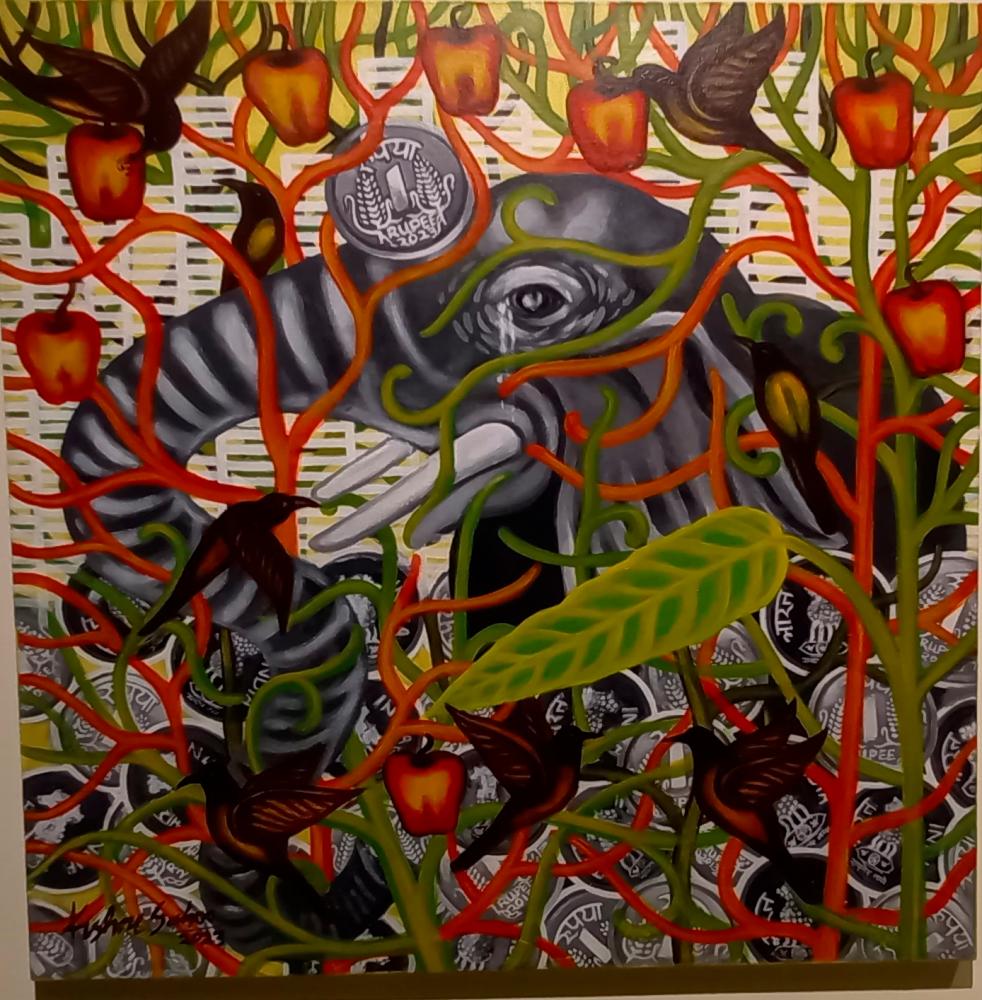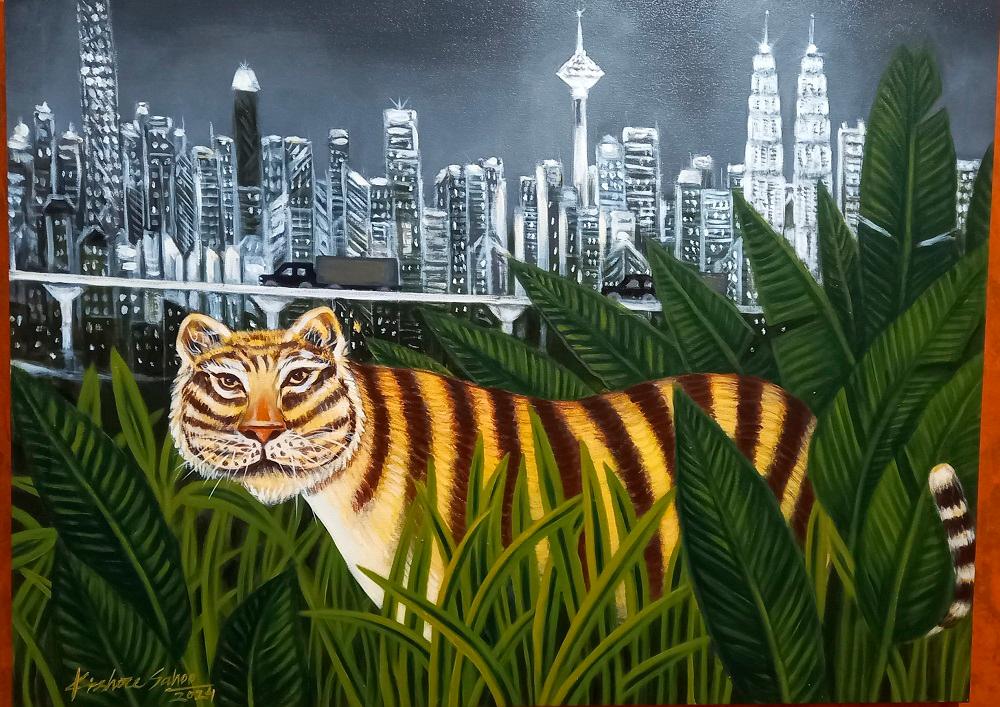ARTIST Kishore Sahoo once noticed during a visit to Sutra Foundation’s centre in Kuala Lumpur that several jungle fowls he used to see roaming in its neighbourhood near Titiwangsa Park were nowhere to be found.
This observation became a subject of his acrylic painting titled Parallel Lives. The work depicts six wild cockerels standing amid a clump of dense foliage while lively birds rest on the large leaves above.
Looming ominously in the backdrop is another jungle of sorts. Skyscrapers and concrete buildings appear to be on the verge of encroaching from the distance upon this gentle setting of nature.
Such contrasts between elements of the wild and the vast urban sprawl of humans were highlighted in Kishore’s exhibition called Nature on the Edge of Cityscapes, held recently at Sutra’s KamaRia Gallery in Petaling Jaya.
“It is about how today’s world looks like to me. There is much global warming happening and through my paintings I am showing the (effect on) nature.
“At the same time I am showing the beauty of nature,” said Kishore from Orissa in India.
His other works feature more fowls such as peacocks, swans and white doves, all living in unsuspecting calm amid a backdrop of towering man-made structures that block the horizon.
In Wildlife on City Edge, Kishore presents a wild tiger with an enigmatic expression as the central focus of the canvas. The animal bears an almost pensive-like countenance as it gazes outward while a line of massive buildings gleam jarringly under the night sky behind.
Another quaint work, juxtaposing tranquility and clutter, shows a man practising yoga on a balcony of a dense city. In a similar vein, KL China Town is an impressionistic take depicting a market street filled with an intense crowd of people in the heart of the city.
Through his art, Kishore, who has travelled across India, Malaysia, Indonesia, Nepal and Thailand, creates discourse on the paradox of modern human settlements burgeoning next to the timeless equanimity of nature.
One cannot help but feel the persistent domination and even threat of metropolitan cities as they callously expand with stony disregard to non-human lives and habitats in rural or wild spaces.
Additionally, the buildings he creates as part of his menacing backdrops are interesting as they seem to be devoid of any sort of life, their mammoth frames looming ominously with steely intent over unsuspecting souls in the fragile natural world.










